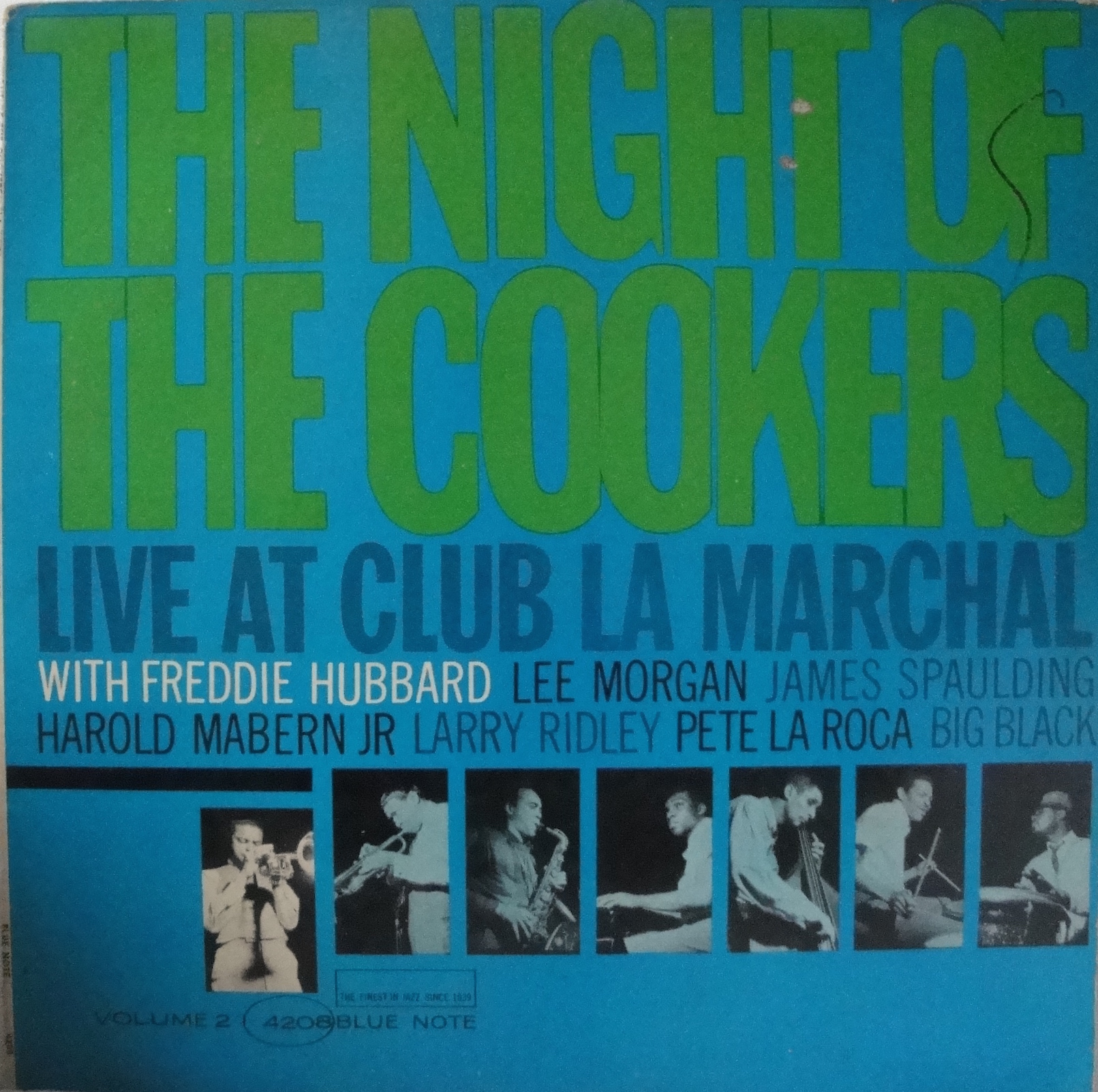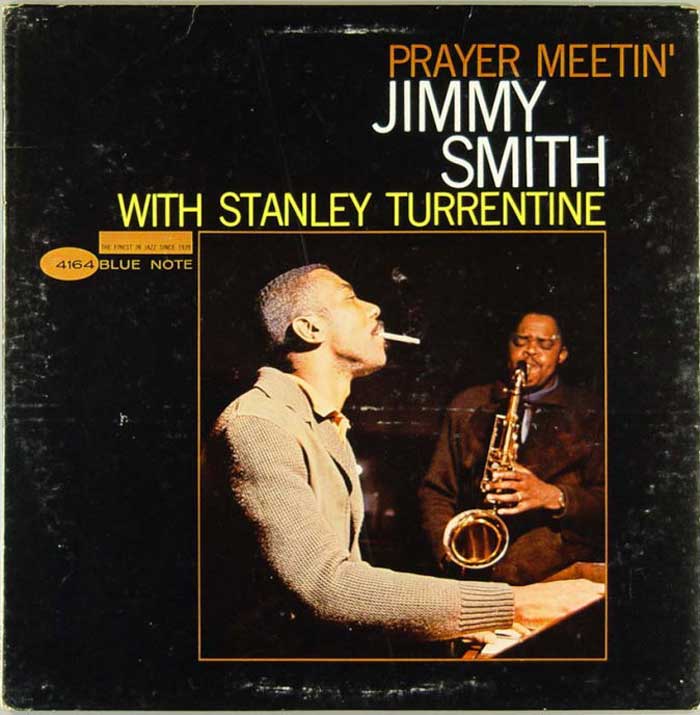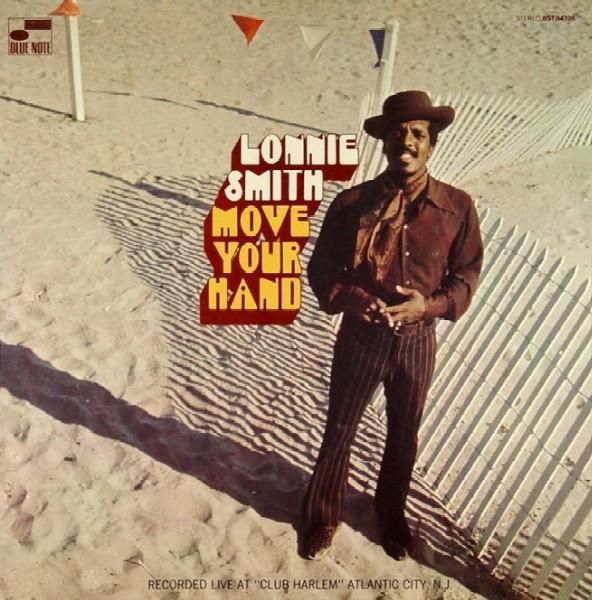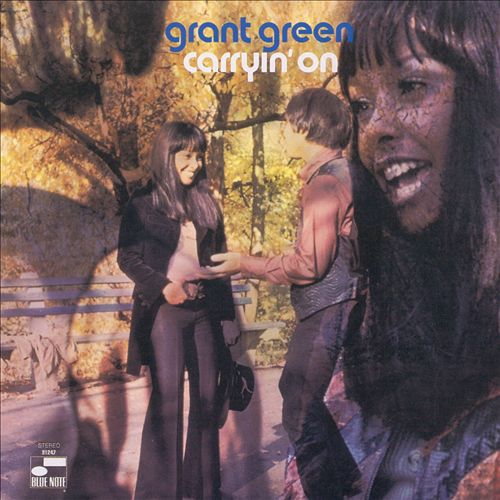Freddie Hubbard’s in top form. Lee Morgan’s below average. The group’s hi-voltage performance is marred by boring percussion excursions. In short, Hubbard’s 1965 live date at Club La Marchal, Night Of The Cookers Vol.2, is a mixed bag.
Personnel
Freddie Hubbard (trumpet), Lee Morgan (trumpet), James Spaulding (alto sax), Harold Mabern Jr. (piano), Larry Ridley (bass), Pete LaRoca (drums), Big Black (congas)
Recorded
at Club La Marchal, NYC, on April 9 & 10, 1965
Released
as BLP 4207 in 1965
Track listing
Side A:
Jodo
Side B:
Breaking Point
Jodo starts with a haunting bass note that catapults the group into modal action. Hubbard ignites amazing, free flowing fireworks, Spaulding impressively fills the vacuum between ex-and impressionism. But then, alas, percussion jams create no end of tedium. Where to go from there? Jodo rules out an escape route and leaves one gasping for breath. It tends to be ‘loud’ bop instead of ‘hard’ bop. Breaking Point is a great Latin tune but this version is quite uneven. It makes one long for Hubbard’s previous Blue Note releases and the many classic albums he played on like Wayne Shorter’s Speak No Evil and Art Blakey’s Ugetsu.
Fellow trumpet legend Lee Morgan has a hard time following Freddie Hubbard. His off-day ruined the promise that The Cooker’s star-studded line up held. Reportedly, Morgan’s addiction to heroin took its toll considerably those days. Take into account that as a consequence Morgan didn’t own a horn and played the Club La Marchal dates on a borrowed trumpet. Plus mouthpiece.
Each song extends over twenty minutes. (same goes for Night Of The Cookers Vol. 1 consisting of Pensativa and Walkin’) That’s fine if the dynamics are in check. But they aren’t. Not a scorched meal, but shall we say, a bit overdone.







